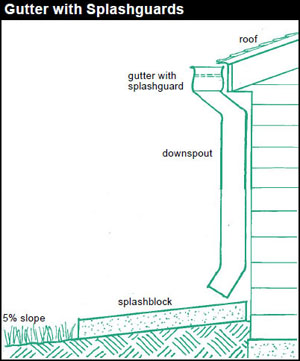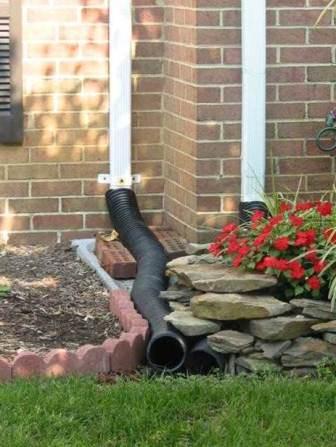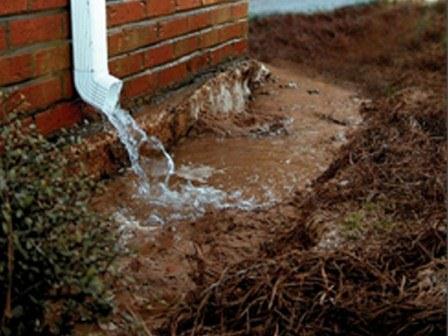 Wetness or erosion near your foundation walls and drip line can be very damaging. The source of these problems can include:
Wetness or erosion near your foundation walls and drip line can be very damaging. The source of these problems can include:
- Gutters that need to be cleaned or are undersized
- Downspouts and sump pump pipes
- Poor grading around foundation walls
Poor grading around the foundation walls may exacerbate these problems. You may need to fill in depressions that have formed near the downspout. Land around your house should slope away from foundation walls. Ideally, a 5% grade should be maintained for a distance of ten feet around your home.
Gutter Inspection and Maintenance
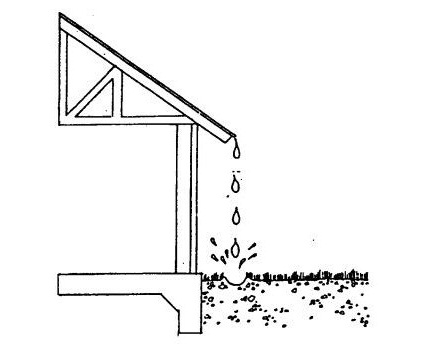
Inspect the outside of the gutters and downspouts for streaks or watermarks and look for erosion along the drip line. These are all indications that the gutters are overflowing when it rains and need to be cleaned.
Gutters should be cleaned free of debris at least once a year. This should be done more frequently if you have trees close to your house. Installing gutter guards can help reduce the frequency of gutter cleaning needed.
If the gutters appear to be clean, observe how they function during normal rainstorms. A spillover of runoff is an indication of undersized gutter system. If you see spillover, consider installing larger gutters.
Protect Soil Along Drip Line Against Gutter Overflow
If the gutters are spilling over but are not easily accessible or cost too much to replace, consider protecting the soil along the drip line. This can be done by spreading gravel or planting vegetation along the drip line.
Tips for protecting soil along the drip line:
- A band of bluestone or pea gravel about 10 – 12 inches wide should provide adequate protection for the soil.
- Before putting down the gravel, spread a sheet of landscape fabric over the area.
- Install plastic edging (4 – 5 inches tall) along both sides of the area where the gravel will be added. The edging will keep the gravel in place.
- Pour in a layer of gravel about 3 – 4 inches thick.
- Ground covers or a row of thick leafy shrubs can also protect the soil from gutter spillage, complementing existing landscaping. Gravel and vegetative covers can also be used simultaneously.
Splash Blocks and Downspouts
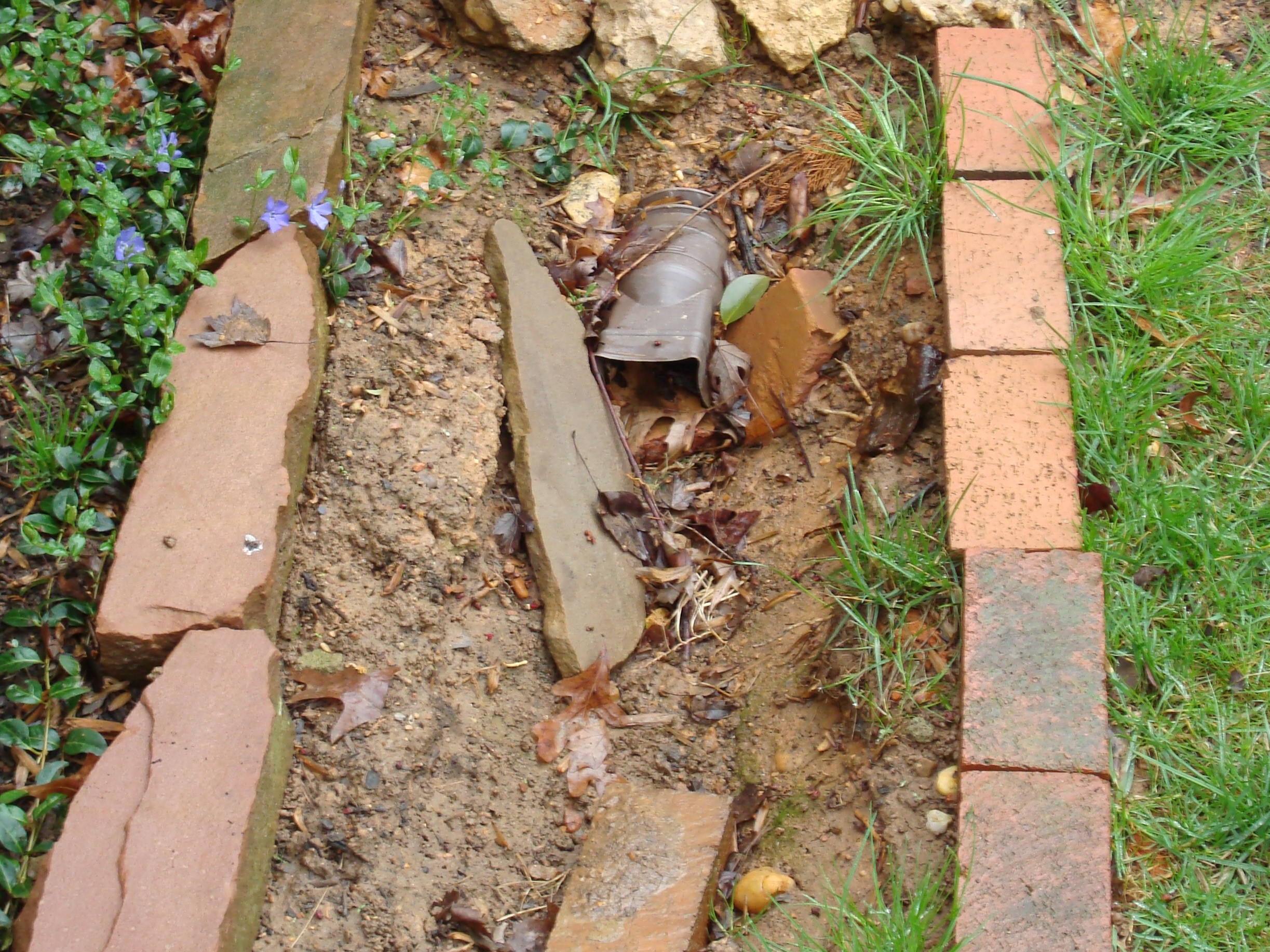
When it rains hard, an average sized home can experience hundreds of gallons of runoff coming from the roof. If downspouts and sump pumps are not set up correctly, it can cause foundation problems, erosion or wet spots in the yard.
To start, make sure that the land around the house slopes away from foundation walls and fill in any depressions near the downspout. Ideally, a 5% grade should be maintained for a distance of ten feet around your home.
1. Splash Block and Stones: Protect the Pipe Outlet
Install a concrete or plastic splash block at the end of the pipe to direct flow away from the foundation wall and prevent erosion.
If erosion still occurs, place stones along the flow path at the end of the splashguard to protect the underlying soil. The stones should be fist-sized or smaller.
2. Downspout Extensions: Change the Discharge Point
Downspout or sump pump extensions (non-perforated corrugated plastic pipes) can be attached to the downspouts to direct flow further from the house. The pipes can either be laid on the ground surface or buried underground.
Whenever you redirect stormwater, make sure it is discharged to a suitable area. Downspout extensions can be used in combination with swales, rain gardens or other structures that redirect or capture runoff, especially if a suitable area is not within a reasonable distance.
